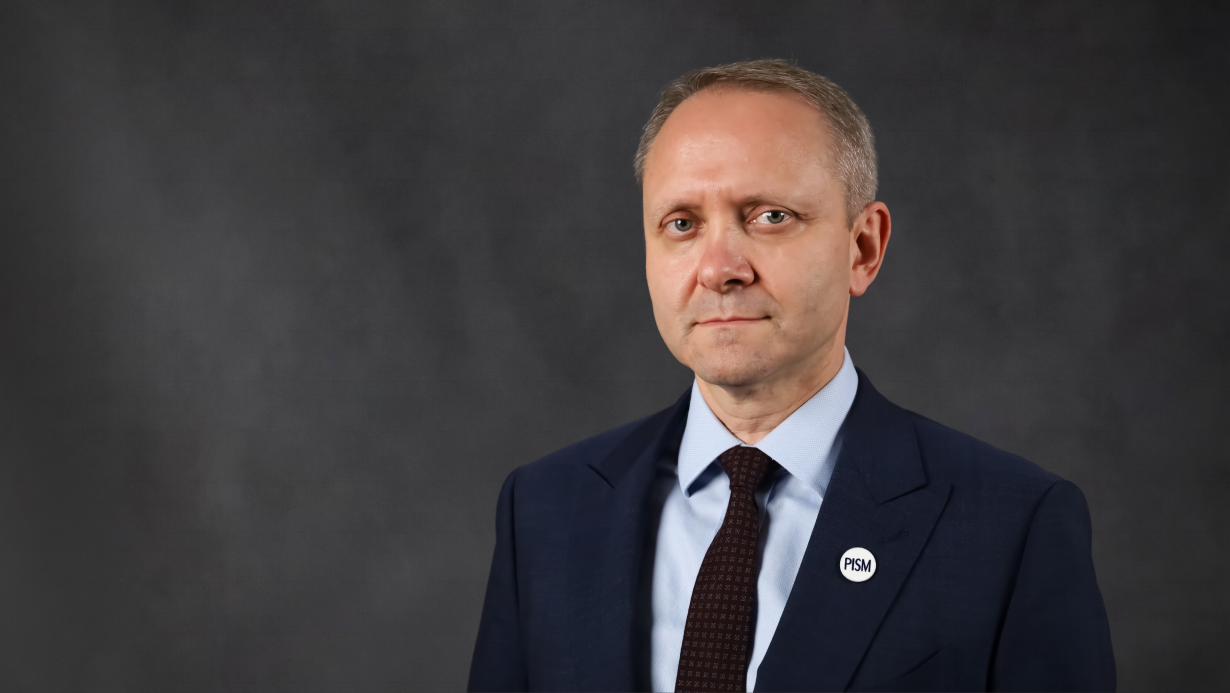A Change in NATO's Approach to Deterrence
The special meeting of defence ministers on 16 March and the special summit of NATO leaders on 24 March indicate that the Alliance is accelerating work on strengthening its defence and deterrence. According to the NATO Secretary General, the Alliance must redefine its approach to deterrence in response to the Russian aggression against Ukraine.
_sm.jpg) POOL/Reuters/Forum
POOL/Reuters/Forum
What was the purpose of the special meeting of NATO defence ministers?
The ministers decided that military options should be prepared to strengthen defence and deterrence capabilities. The convening of an extraordinary summit of NATO leaders a few days later indicates that the Alliance may be considering a change in the existing approach to deterrence. These decisions most likely will be reflected in the Alliance’s new strategy to be adopted at the Madrid summit in June. The Allies have significantly accelerated the decision-making processes in response to the massive Russian invasion of Ukraine. The holding of extraordinary meetings shortens the process of reaching consensus on a new strategy, which would normally require long behind-the-scenes negotiations. It also shows the gravity of the situation and the importance of the decisions to be taken.
What might change in the existing approach to deterrence?
Since the annexation of Crimea by Russia in 2014, NATO has based its deterrence on what it calls enhanced Forward Presence (eFP). In 2017, NATO deployed multinational battle groups to Poland and the Baltic states consisting of around 1,000 soldiers each. The multinational composition of these groups indicated that in the event of a Russian attack it would not be possible to divide the allies. The U.S. also increased its military presence on the Alliance’s Eastern Flank outside NATO structures. The size of these troop deployments indicated that there was no consensus in NATO on deviating from certain self-imposed restrictions related to the military presence in the newer member states. In the NATO-Russia Founding Act of 1997, the Alliance announced that “in the current and foreseeable security situation” it would not permanently station significant combat forces there. Although the size of these forces was not officially defined, it was considered to refer to brigade-sized units. As a result, the ability to defend and deter was mainly based on the potential of the countries on the Eastern Flank and the ability to deploy larger contingents of NATO reinforcements during a crisis. Now the NATO Secretary General is suggesting that a shift in the approach to deterrence to a forward defence is necessary. This may be a signal that much larger forces will be permanently deployed on the Eastern Flank. The deployment of such forces would increase NATO’s ability to conduct collective defence missions from the very first hours and days of a conflict.
How has Russia’s invasion of Ukraine increased the threat to NATO?
The war in Ukraine increases the threat to NATO in several ways. Russia is threatening to attack convoys of weapons and equipment bound for Ukrainian armed forces. Attacks on a military training centre just 20 km from the border with Poland and near Lviv, may be a warning that countries involved in supplying these convoys may also be targeted. Russia is trying to intimidate and divide the West in order to weaken support for Ukraine. In the long run, it may also be in Putin’s interest to provoke a greater conflict directly with the Alliance. Among Putin’s goals are not only to enforce a change of government in Ukraine, its demilitarisation and full subjugation, but also to weaken NATO and the collective West. Putin demands “security guarantees” such as the withdrawal of U.S. and NATO forces from the states that joined the Alliance after the collapse of the USSR. There is a risk that Putin will start a conflict with NATO under any pretext in order to use it, like the war in Ukraine, to negotiate a new European security system and force concessions on his so-called “security guarantees”. Russia is taking clear steps to convince the West that during such a conflict, the risk it might use nuclear weapons would increase.
Has NATO enhanced its defence and deterrence in response to these threats?
After the start of Russia’s attack on Ukraine, NATO activated defence plans that made it possible to increase the presence of Alliance forces on the Eastern Flank. A decision was made to create a new multinational battle group in Slovakia. One of the elements of the NATO Response Force (NRF), the “spearhead”, or VJTF, was also transferred to Romania. The size of NATO forces on the Eastern Flank increased at least two-fold to 20,000 troops, with 10,000 stationed in Poland. The Allies have increased the readiness of the forces that can be deployed as reinforcements. There are 40,000 troops under direct NATO command and 130 combat aircraft and 140 ships on high alert. Even before the invasion, the U.S. began to increase its presence in Europe and on the Eastern Flank—U.S. forces in Europe has reached 100,000, of which several thousand troops have been placed under NATO command. For the first time in several decades, the U.S. has transferred an aircraft carrier strike group (including supporting units) to NATO command. All of this increases the Alliance’s ability to launch full-scale defence operations in a fairly brief period. An important element is also the deployment of air and anti-missile defence systems on the Eastern Flank to strengthen NATO’s ability to defend the allies against a limited missile attack.


